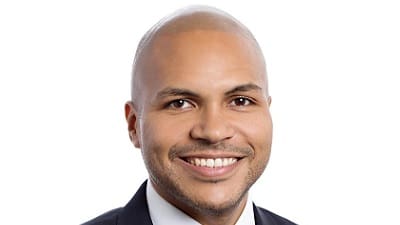
With the implementation of Local Law 97, NY owners are at risk of paying hefty fines if they choose to disregard greenhouse gas emission standards. While the law was passed in 2019, compliance accounts for approximately 50,000 of New York’s covered buildings and nearly 60% of the square footage in New York City, so building owners must develop compliance plans straightaway.
The law limits annual greenhouse gas emissions for covered buildings to incentivize building owners to search for renewable energy options. A covered building, which includes i) buildings larger than 25,000 square feet, ii) two or more buildings on the same tax lot that together exceeds 50,000 square feet, or iii) two or more condominium buildings that are governed by the same board of managers and that together exceed 50,000 square feet, to pay a yearly fine of $268 per metric ton. Because such a large share of New York City’s greenhouse gas emissions come from space and water heating systems that run on fossil fuels — more than 40 percent, according to Urban Green Council — replacing oil- and gas-burning boilers and furnaces with electric heat pumps would help building owners meet their carbon targets. The adoption of this law is incumbent in defying this widespread, pressing environmental challenge.
Because the decarbonization of New York’s building sector cannot happen overnight, the benchmarks have been set in 3 stages thus far. Before the first stage of compliance, which begins in 2024, building owners must ensure energy conservation measures (ECM) have been implemented. Some examples include – repairing all heating system leaks, installing individual temperature controls or insulated radiator enclosures with temperature controls, installing timers on exhaust fans, and replacing or repairing all steam traps that are all in working order. Buildings that cannot meet emissions caps with just ECM’s will have to undergo more extensive energy retrofits, procurement of renewable power, and, if approved by policymakers, carbon trading.
Once these initiatives are completed, compliance begins in 2024 with annual carbon emission caps based on buildings’ primary energy use and square footage. Next, buildings must reduce their emissions by 40% by 2030 and 80% by 2050. These emissions caps decrease over time to reach a citywide goal of no more than 3.09 pounds of 1.5 kilograms of carbon dioxide per square foot per year.
To assess the performance of buildings, an advisory board will convene. The committee will be staffed with 16 registered design professionals, with eight appointed by the mayor. They will need to provide advice and recommendations to the commissioner and the mayor’s office no later than January 1st, 2023, for additional or improved approaches to assessing building energy performance so that the government can assist in long-term planning and sustainability efforts. The mayor will appoint one architect, operating engineer, building manager, public utility industry representative, environmental justice representative, business section representative, residential tenant representative, and environmental advocacy organization representative.
Reports to the advisory board from building owners begin May 1st, 2025, and by May 1st every year thereafter. The owner of a covered building must file a report with the department, certified by a registered design professional, containing information from the previous calendar year that the building complied with emission limits, or, failed to comply with the law. Furthermore, building owners undergo civil penalties equal to the gross floor area multiplied by $0.50 for each month that the violation is not corrected for failure to report. However, building owners are not held liable if the report is filed within 60 days of May 1st.
To help owners comply, Local Law 97 creates a ‘property assessed clean energy’ (PACE) program, which will allow building owners to finance energy efficiency retrofits with low-or-no interest loans through an assessment on their property tax bill. These governmental finance tools have been made available for building owners over their limits. For buildings where it’s not financially feasible to meet the emission limits: affordable housing, houses of worship, some healthcare facilities, etc. LL97 provides alternative compliance options in these cases.
With more widespread government support, New York City is on its way to the complete transition from fossil fuel energy sources to a city that runs solely on clean energy technologies. However, before the sustainable options become overly saturated, you should act now and stay ahead of the curve. With practical, cost-effective, and sustainable energy retrofit solutions available, refinance your building now and set the stage for a secure transition towards a greener New York. EP Engineering is available to help you comply with Local Law 97, and other adjustments buildings will experience as New York City sees crucial regulation for years to come.
About EP Engineering:
Founded in New York City in 2004, EP Engineering is a full-service MEP Engineering firm offering comprehensive planning, design and fit-out services in support of infrastructure and critical building systems. More than 20 highly experienced professionals work with some of the city’s largest landlords and operators to successfully complete scopes of work, including, but not limited to: HVAC, Electrical, Fire Alarm, Plumbing & Fire Protection; Energy Audits and Benchmarking; Green Building and LEED certifications; Telecommunications Design. EP Engineering carries a reputation for excellence in the Tri-State area, providing specialized engineering expertise for affordable housing and residential buildings, education and healthcare facilities, restaurant venues, hospitality properties, retail flagships and commercial high-rises.











